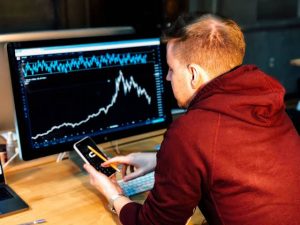News & Events
6 ways on how to become an Independent Cryptocurrency trader ( 2022)
- November 13, 2022
- Posted by: Favour Right
- Category: Crypto trading


Anyone who wants to become an Independent Cryptocurrency trader need only spend a few minutes online to find such phrases as “plan your trade; trade your plan” and “keep your losses to a minimum.”
For new traders, these tidbits can seem more like a distraction than actionable advice. If you’re new
to trading, you probably just want to know how to hurry up and make money and become independent.
From the last YouTube live stream we had With our CEO, Emmanuel Jacob, and the guest speaker, let’s get to know how you can become an Independent Cryptocurrency trader( You can join our telegram channel to know who we’re going to have any live stream).
how to become an Independent Cryptocurrency trader.
1. Always Use a Trading Plan.
A trading plan is a written set of rules that specifies a trader’s entry, exit, and money management criteria for every purchase.
Known as backtesting, this practice allows you to apply your trading idea using historical data and determine if it is viable. Once a plan has been developed and backtesting shows good results, the plan can be used in real trading which is one of the build-ups to becoming an Independent trader.
2. Protect Your Trading Capital.
Saving enough money to fund a trading account takes a great deal of time and effort. It can be even more difficult if you have to do it twice.
It is important to note that protecting your trading capital is not synonymous with never experiencing a losing trade on the way to becoming independent. All traders have losing trades.
Protecting capital entails not taking unnecessary risks and doing everything you can to preserve your cryptocurrency trading business.
3. Become a Student of the Markets.
Think of it as continuing education for you to become an Independent Cryptocurrency trader. Traders need to remain focused on learning more each day. It is important to remember that understanding the markets, and all of their intricacies, is an ongoing, lifelong process.
Hard research allows traders to understand the facts, like what the different economic reports mean. Focus and observation allow traders to sharpen their instincts and learn the nuances.
World politics, news events, and economic trends— even the weather—all have an impact on the markets. The market environment is dynamic. The more traders understand the past and
current markets, the better prepared they are to face the future.
4. Risk Only What You Can Afford to Lose.
Before you start using real cash, make sure that all of the money in that trading account is truly expendable. If it’s not, the trader should keep saving until it is.
Money in a trading account should not be allocated for the kid’s college tuition or paying the mortgage. Traders must never allow themselves to think they are simply borrowing money from these other important obligations.
Losing money is traumatic enough. It is even more so if it is capital that should have never been risked in the first place.
5. Always Use a Stop Loss.
A stop loss is a predetermined amount of risk that a trader is willing to accept with each trade. The stop loss can be a dollar amount or percentage, but either way, it limits the trader’s exposure during a trade.
Using a stop loss can take some of the stress out of trading since we know that we will only lose X amount on any given trade. Not having a stop loss is bad practice, even if it leads to a winning trade.
Exiting with a stop loss, and therefore having a losing trade, is still good trading if it falls within the trading plan’s rules. The idea is to exit all trades with a profit, but that is not realistic. Using a protective stop loss helps ensure that losses and risks are limited, this way, you’re independent of your decision.
6. Know When to Stop Trading.
There are two reasons to stop trading: an ineffective trading plan, and an ineffective trader.
An ineffective Cryptocurrency trading plan shows much greater losses than were anticipated in historical testing.
That happens. Markets may have changed, or volatility may have lessened. For whatever reason, the trading plan simply is not performing as expected.
Stay unemotional and businesslike. It’s time to reevaluate the trading plan and make a few changes or to start over with a new trading plan.
An unsuccessful Cryptocurrency trading plan is a problem that needs to be solved. It is not necessarily the end of the trading business. An ineffective trader makes a trading plan but is unable to follow it.
External stress, poor habits, and lack of physical activity can all contribute to this problem. A cryptocurrency trader who is not in peak condition for trading should consider taking a break. After any difficulties and challenges have been dealt with, the trader can return to business.
Conclusion.
Understanding the importance of each of these Cryptocurrency trading methodologies, and how they work together, can help establish an Independent Cryptocurrency trader.
Trading is hard work, and traders who have the discipline and patience to follow these rules can increase their odds of success in a very competitive arena and become independent.
